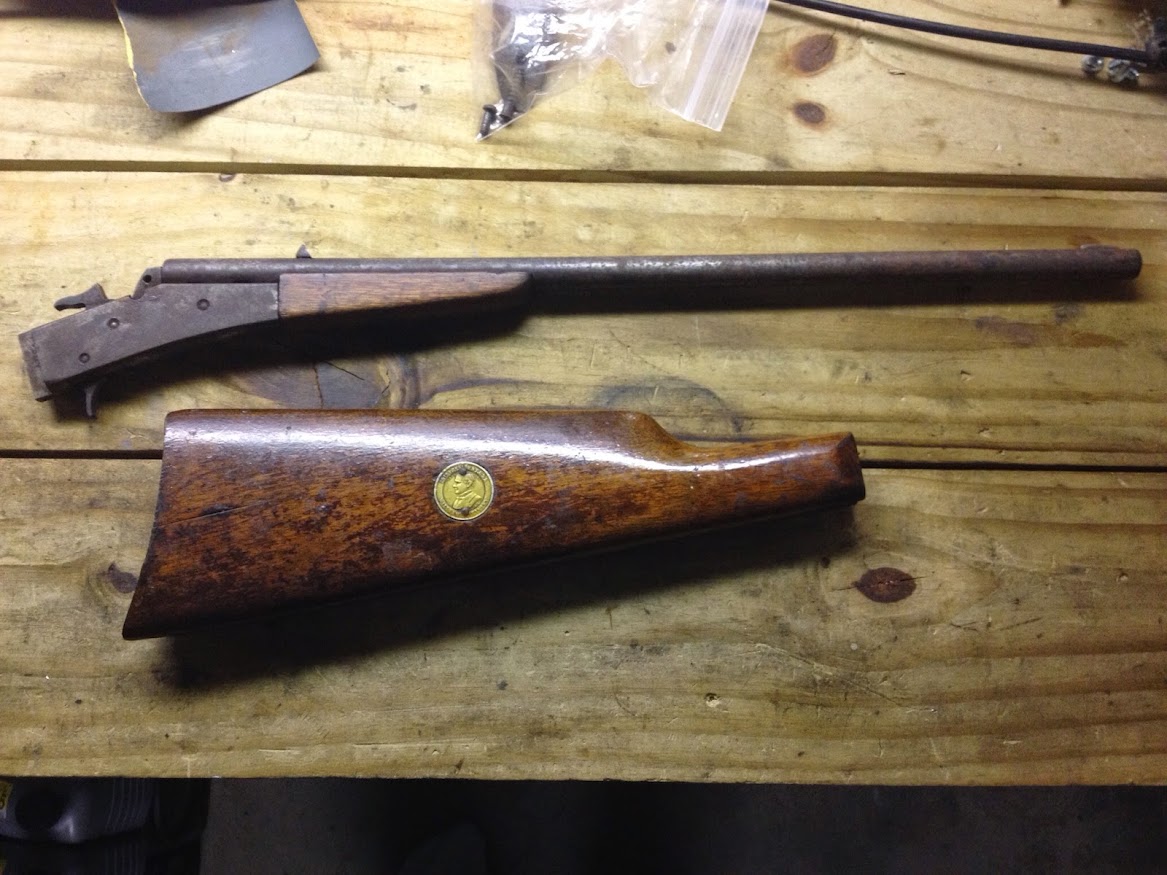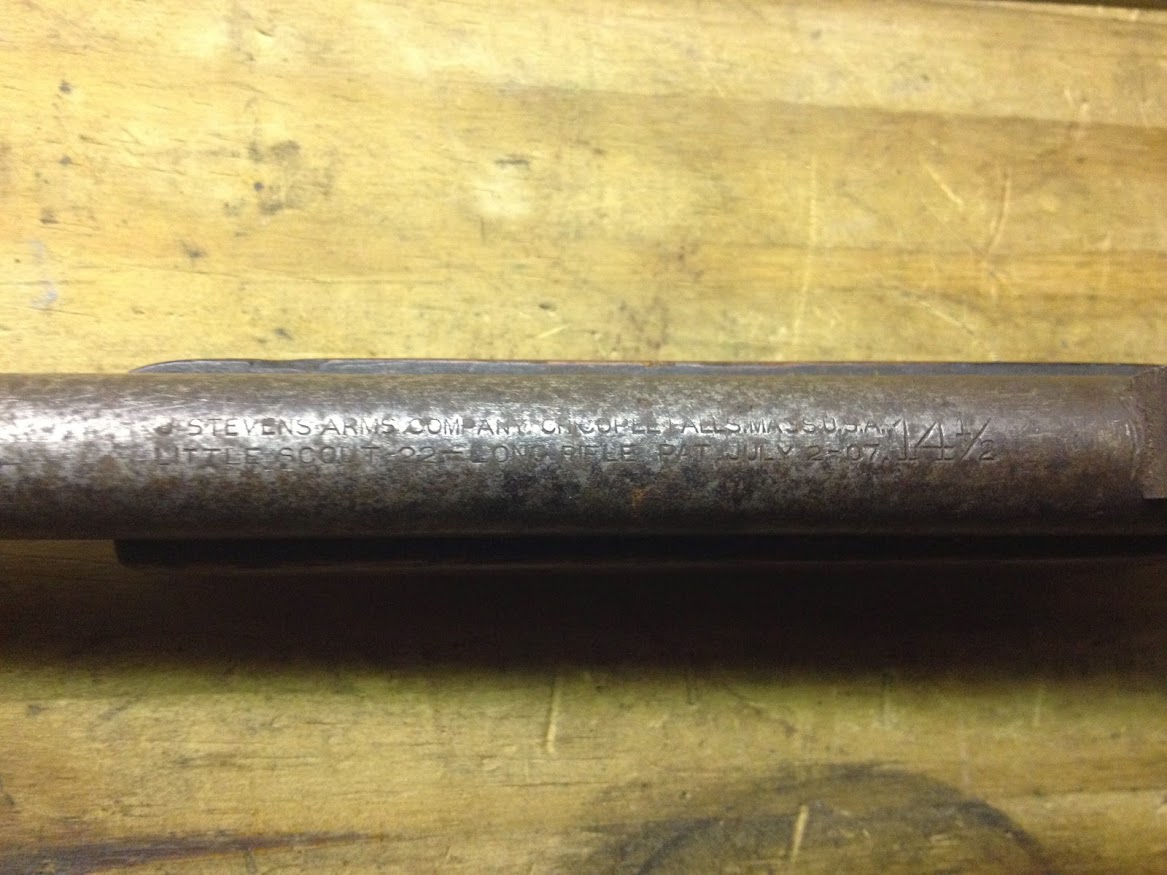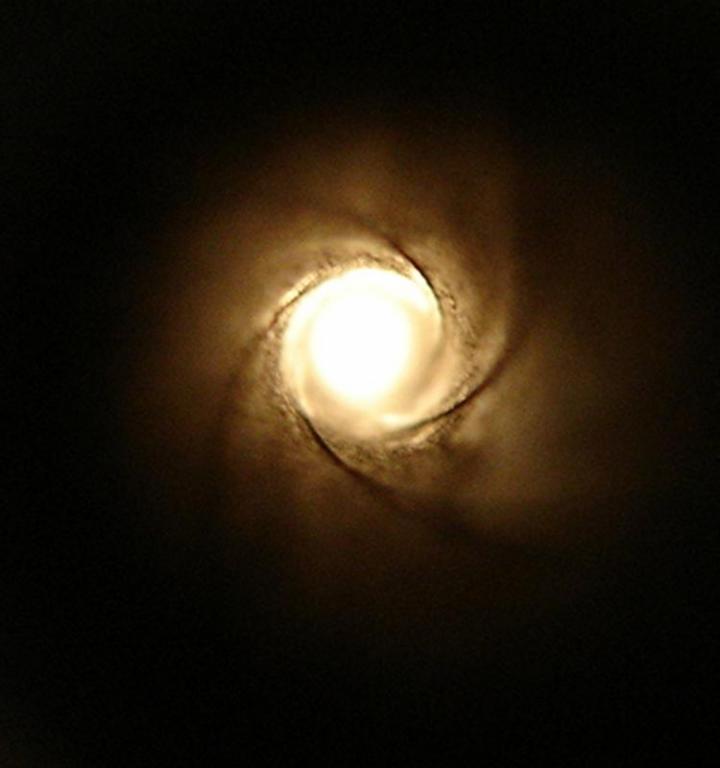This is my wife's great-grandfather's gun, and has a neat background. He used it for harvesting hogs on his farm for family supper. It likely hasn't been shot in 50 years. It has lots of general corrosion, but I don't think it's so roached that it can't run again. I will need to procure a few parts, some of which are available...most of which are not. I'll need to find a local gunsmith who can help me fit some of these parts.
It's got an odd William McKinley presidential coin or seal on the right side of the buttstock. I'm not sure what that's about; I haven't seen any others on the internet like this. It looks to have some age to it. What's odd is McKinley's term ended in 1901, and this gun was produced at some point between 1911 and the mid-1920s, so I'm not sure of the McKinley connection here. The model 14-1/2 began production in 1911 and ran through the 1930s. Savage bought J. Stevens Arm & Tool in the early 1920s, but didn't start putting the "SVG" stamp on the receivers until the mid-1920s from what I understand. This gun doesn't have it, so I'm thinking that it's, at its youngest, 90 years old...or as many as 103 years old.
Unfortunately, the bore looked like a sewer pipe inside. The rifling was barely present. After a lot of scrubbing, the rifling is more apparent, but there's still a lot of roughness in there. I'm not familiar with this aspect of antique firearm restoration. Is it pretty much a given that this bore will need to be professionally restored or relined or whatever needs to happen in order for it to shoot again? I can handle the exterior, and even some of the mechanicals of the receiver if I can get parts, but the bore is new ground for me.
Anyway...here are some as-is pictures. More certainly to follow. I appreciate comments from all, and especially those familiar with these old Stevens rifles or those versed in antique firearms restoration for some tips and pointers. Many thanks...



It's got an odd William McKinley presidential coin or seal on the right side of the buttstock. I'm not sure what that's about; I haven't seen any others on the internet like this. It looks to have some age to it. What's odd is McKinley's term ended in 1901, and this gun was produced at some point between 1911 and the mid-1920s, so I'm not sure of the McKinley connection here. The model 14-1/2 began production in 1911 and ran through the 1930s. Savage bought J. Stevens Arm & Tool in the early 1920s, but didn't start putting the "SVG" stamp on the receivers until the mid-1920s from what I understand. This gun doesn't have it, so I'm thinking that it's, at its youngest, 90 years old...or as many as 103 years old.
Unfortunately, the bore looked like a sewer pipe inside. The rifling was barely present. After a lot of scrubbing, the rifling is more apparent, but there's still a lot of roughness in there. I'm not familiar with this aspect of antique firearm restoration. Is it pretty much a given that this bore will need to be professionally restored or relined or whatever needs to happen in order for it to shoot again? I can handle the exterior, and even some of the mechanicals of the receiver if I can get parts, but the bore is new ground for me.
Anyway...here are some as-is pictures. More certainly to follow. I appreciate comments from all, and especially those familiar with these old Stevens rifles or those versed in antique firearms restoration for some tips and pointers. Many thanks...








